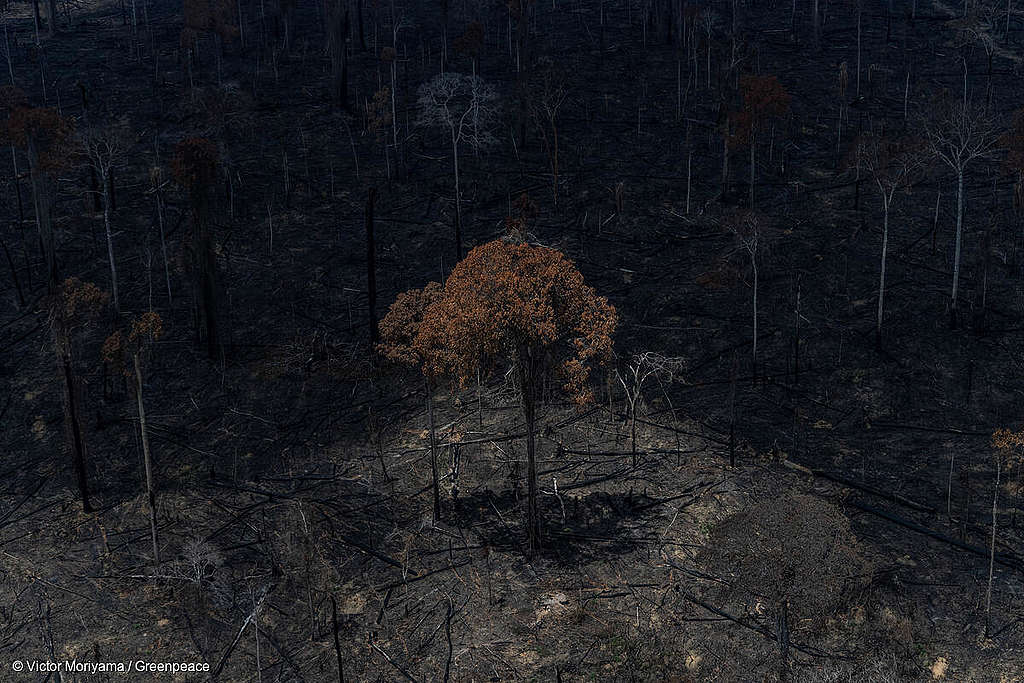
נתונים ממערכת DETER-B, מהמכון הלאומי לחקר החלל (Inpe) שפורסמו ביום שישי (05/11), מצביעים על אזור כריתת יערות של 796 קמ"ר באמזונס, שטח הגדול יותר מפי 4.5 מהעיר גלאזגו שאירחה את ועידת האקלים הבינלאומית ה-26, באותה תקופה. המשמעות היא – אוקטובר השני הגרוע ביותר בסדרה ההיסטורית שהחלה ב-2016. הנתונים שפורסמו עדיין לא כוללים נתונים מהיומיים האחרונים של החודש. בממוצע, חלה באזור זה עלייה של 27% בהתראות על כריתת עצים לחודש, בשלוש שנות שלטונו של בולסונארו (729 קמ"ר בממוצע ב-2019, 2020 ו-2021) בהשוואה לשלוש השנים שקדמו להן (ממוצע של 572 קמ"ר).
"בעוד שעיניי העולם נשואות ל-COP 26, בהמתנה להתחייבויות רציניות ונחרצות לעתיד כוכב הלכת, ברזיל, שהייתה פעם מובילה בפגישות הללו, לא הציגה אלא תוכניות ריקות חסרות שאפתנות ופרטים. חתימה או אישור של התוכניות וההסכמים השונים לא משנה את המציאות של קרקעות היער – כריתת היערות ושריפות אינן תחת שליטה והאלימות נגד עמים ילידיים והאוכלוסיה המסורתית רק הולכת וגוברת", כך מצהיר רומולו בטיסטה ((Romulo Batista, דובר קמפיין האמזונס של ארגון גרינפיס.
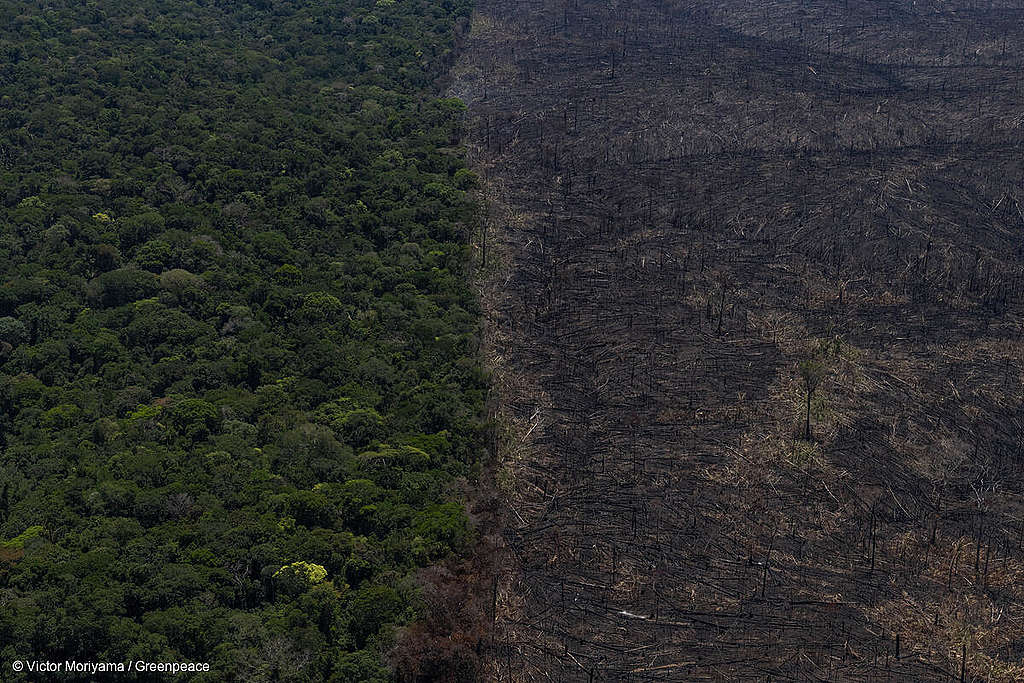
התראות על בירוא היערות באוקטובר, רוכזו במדינות הצפוניות פארה, (שטח של 474 קמ"ר, 59.5% מהכלל), מאטו גרוסו (שטח של 102 קמ"ר, 13% מהכלל) ואמזונס (שטח של 90 קמ"ר, 11% מהכלל). הערכותיו של הארגון Climate Observatory, מצביעות על כך שכמעט מחצית (46%) מגזי החממה הנפלטים מברזיל נובעים מהרס היערות. נתונים משנת 2020 מראים שמזה עשור, פליטות גזי החממה של ברזיל הולכות ועולות. בשנה שעברה, בעיצומה של מגפת הקורונה, עלה שיעור פליטות גזי החממה של ברזיל ב-9.5%, בעוד שבשאר העולם נרשמה הפחתה של כ-7%.
המניע המרכזי להגדלת הפליטות במדינה בשנה החולפת היה הסבת הקרקעות לחקלאות או תעשייה, המביאה לכריתת היערות באמזונס ובסראדו (Cerrado). המגזר היה אחראי ל-998 מיליון טון CO2 בשנת 2020 – עלייה של 24% בהשוואה לשנת 2019. בנוסף, על פי סקר חדש של Carbon Brief, חמש המדינות המזהמות ביותר מ-1850 עד 2021 הן: ארה"ב, סין, רוסיה, ברזיל ואִינדוֹנֵזִיָה. בברזיל ובאינדונזיה, מרבית הפליטות מגיעות מפינוי יערות ושימוש בקרקע לגידול בעלי חיים וחקלאות.

נתוני בירוא היערות של חודש אוקטובר, מגיעים במהלך השבוע הראשון של ועידת האומות המאוחדות לשינויי אקלים (COP 26), במסגרתה, מנהיגי העולם מציגים תוכניות להפחתת פליטת גזי חממה. בברזיל, הועלתה שורה של הצעות חוק בקונגרס העלולה להחמיר את הרס היערות ולהגדיל עקב כך את פליטות הפחמן שלה. בהצעות אלו מוצעים שינויים בחוקים הקיימים בהם הפסקת הצורך ברישוי סביבתי, פיתוח תעשייתי של אדמות ילידיות, הפיכת תיחומם של שטחים ילידיים שעדיין תלוי ועומד לבלתי ניתן לביצוע ולבסוף, לאפשר לגליזציה של השתלטות על קרקעות ציבוריות.
סוף
DETER – 2021 records the second worst October in the historical series
Two days away from closing the data, the states of Pará, Mato Grosso and Amazonas lead the destruction rates
Data from the DETER-B system, from the National Institute for Space Research (Inpe), released today, point to a deforested area of 796km² in the Amazon, more than 4.5 times larger than the city of Glasgow hosting the COP 26 at that time. It means the second worst October since the beginning of the historical series in 2016. The figures released do not yet include data from the last two days of the month. On average, there was an increase of 27% in the area with deforestation alerts for the month in the three years of Bolsonaro´s government (average of 729 km² in 2019, 2020 and 2021) compared to the average of the three previous years (average of 572km²).
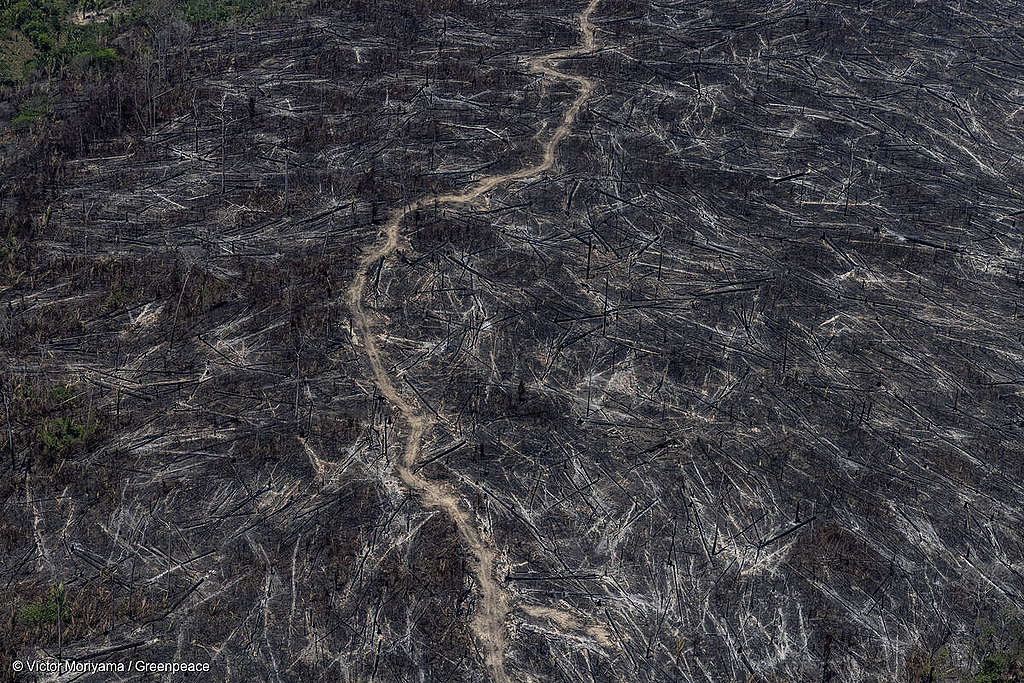
“While the eyes of the world are on the COP 26, waiting for serious and decisive commitments for the future of the planets, Brazil, which was once a leader in these meetings, has presented nothing but empty plans that lack ambition and detail. Signing or endorsing the different plans and agreements does not change the reality of the forest floor, deforestation and fires remain out of control and violence against indigenous peoples and traditional population is only increasing”, said Rômulo Batista, spokesperson for the Amazon campaign at Greenpeace Brazil.
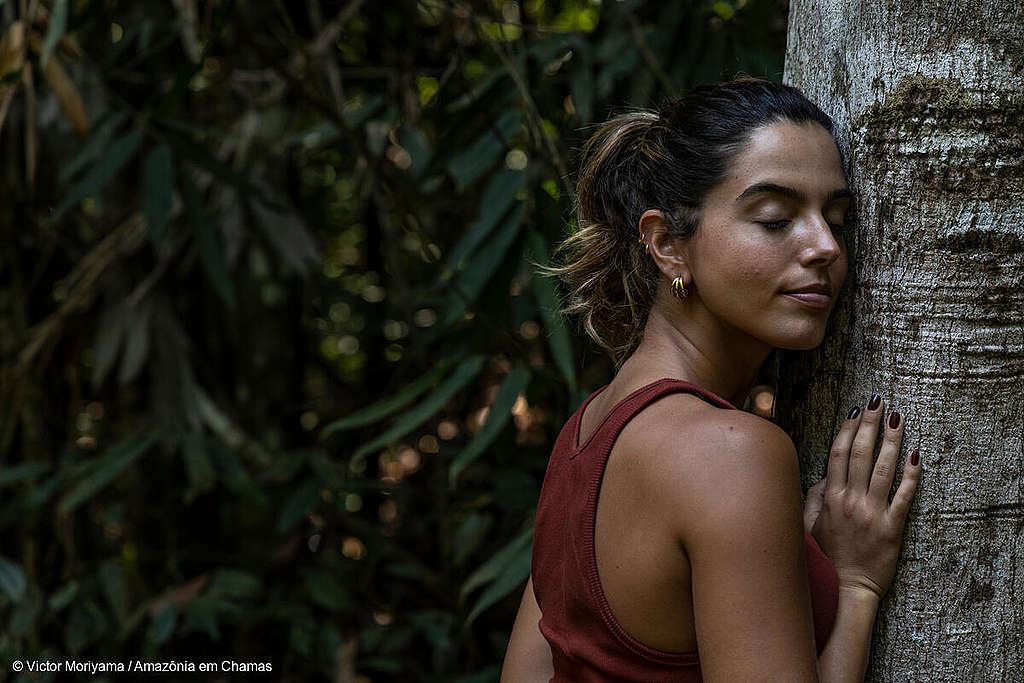
Deforestation alerts in October were concentrated in the northern states of Pará 474km² (59.5% of the total), Mato Grosso 102km² (13% of the total) and Amazonas 90km² (11% of the total). Estimates by the Climate Observatory indicate that most (46%) of the greenhouse gases emitted by Brazil come from deforestation. Data from 2020 show that Brazil has continued to increase its emissions since 2010. Last year, in the midst of the pandemic, the increase in greenhouse gas emissions in Brazil was 9.5%; in the rest of the world there was a reduction of about 7%.
The biggest driver responsible for increasing the numbers in the country was the land use change, which brings together deforestation in the Amazon and Cerrado biomes. The sector was responsible for 998 million tons of CO2 in 2020, an increase of 24% compared to 2019. According to a new survey by Carbon Brief, the five most polluting countries from 1850 to 2021 are: USA, China, Russia, Brazil and Indonesia. In Brazil and Indonesia, most emissions come from clearing forests and using land for livestock and agriculture.
COP 26
The closing of the alerts for October comes during the first week of the United Nations Conference on Climate Change (COP 26). Where world leaders are presenting plans to reduce greenhouse gas emissions. In Brazil, a series of bills in the Congress can aggravate emissions. There are proposed changes to the law to end environmental licensing (Bill 3729/2004), to open indigenous lands for exploitation (Bill 191/2020) and to make the demarcation still pending in many indigenous territories unfeasible (Bill 490/2007), as well as the legalization of land grabbing on public lands (Bill 2633/2020).
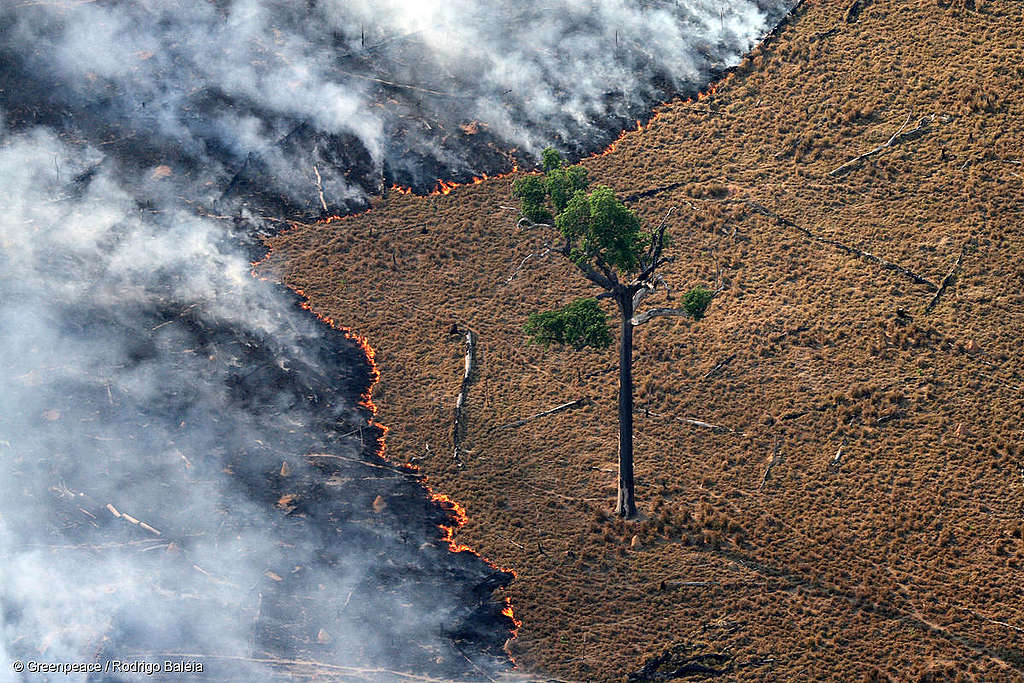 אני רוצה לעזור
אני רוצה לעזור
